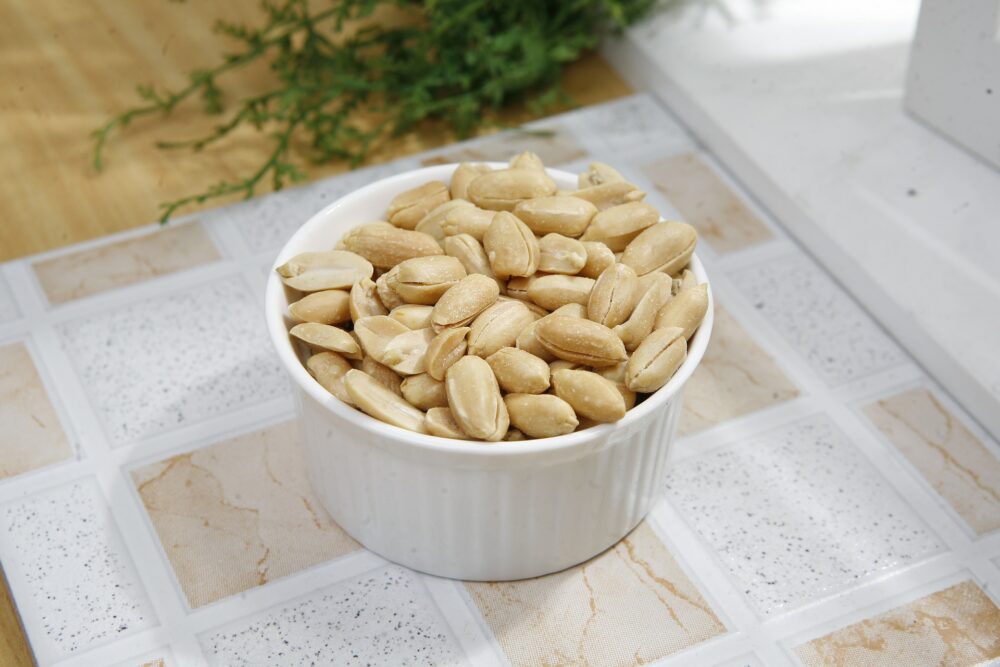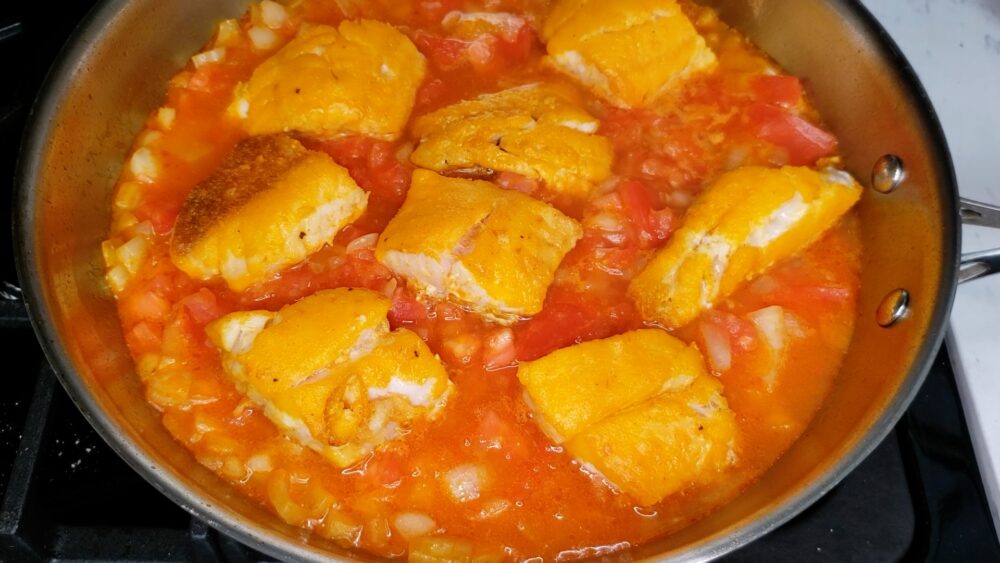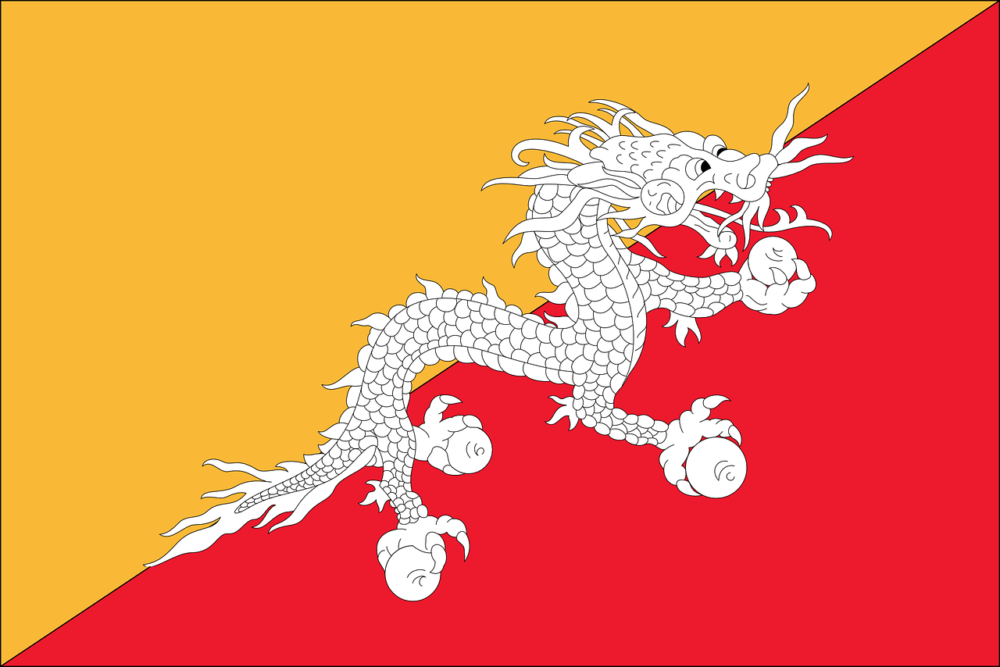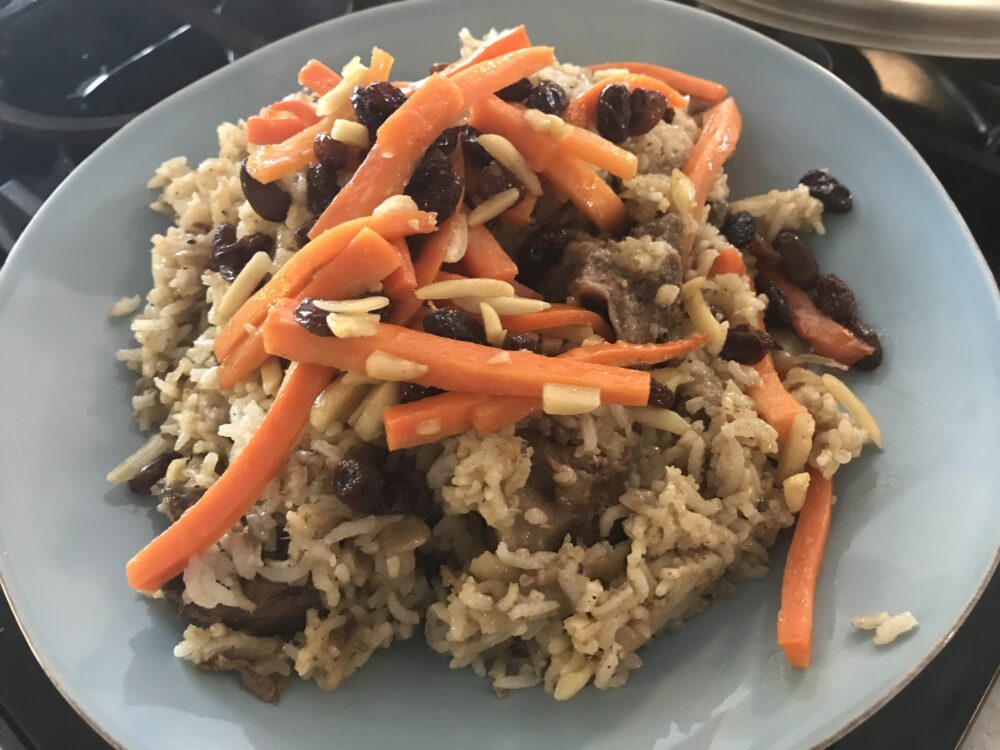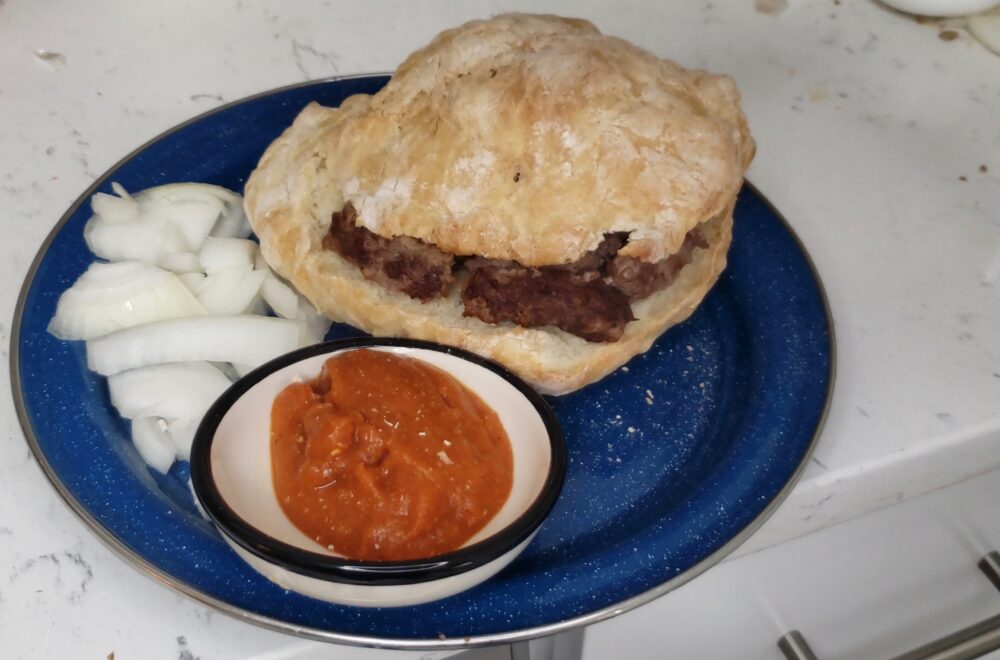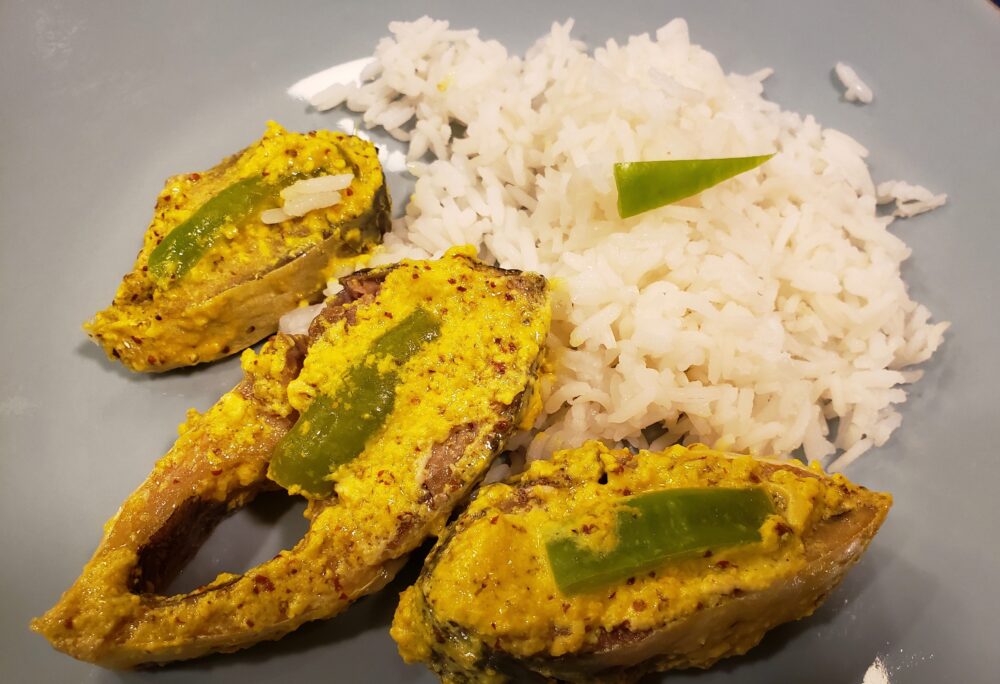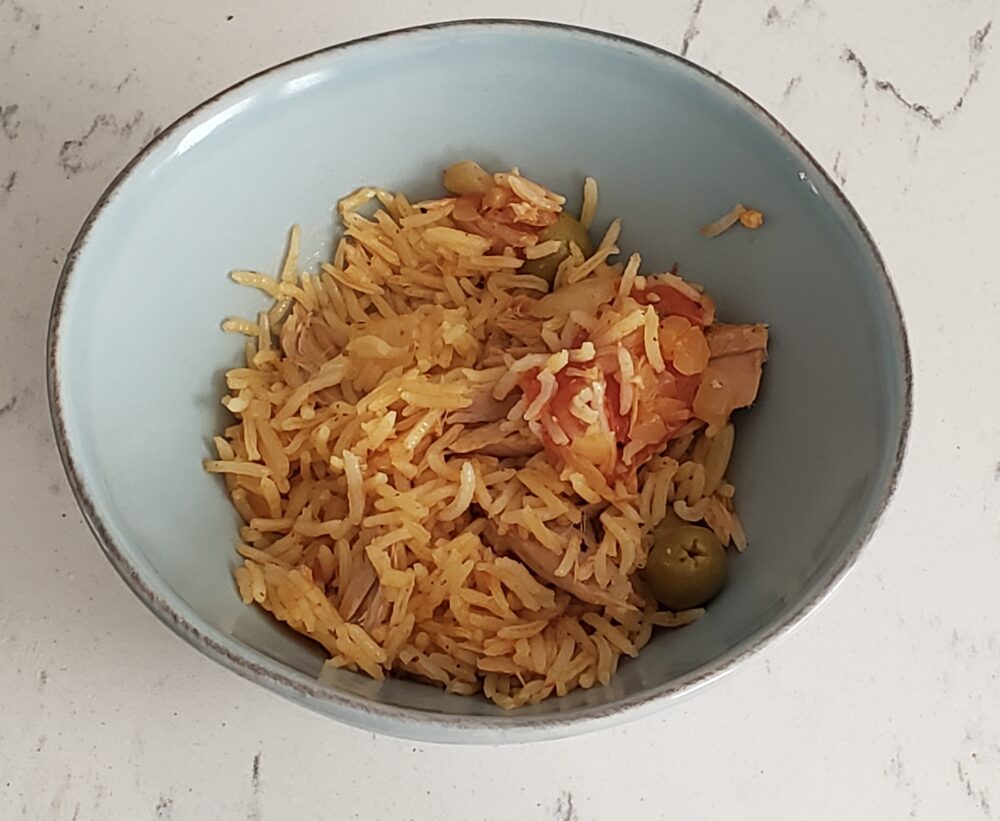Unfortunately, I could not easily find many recipes from The Republic of Benin, an integral country in Western Africa that is known for being the birthplace of voodoo.
Voodoo, as it originated in Benin, is a religion that is very misunderstood and unfortunately not been helped by fictional movies and pop culture.
Benin was also where many of the enslaved people who were kidnapped by Europeans were put on boats to head across the Atlantic into the New World.
I’m not sure how much of that I wanted to convey to Sam in our project. The horrors of slavery is a terrible part of history that we must teach, but I’m not quite ready to share that concept with my three year old. He has plenty of time to learn about the injustices and horrors in the world.
Instead, I tried to focus on the culture of Benin and the food. Not sure he took much away from this one (the only dish he was really impressed with was the side of white rice), but at least he is now familiar with Benin as a country and its unique geographic shape.
THE CUISINE
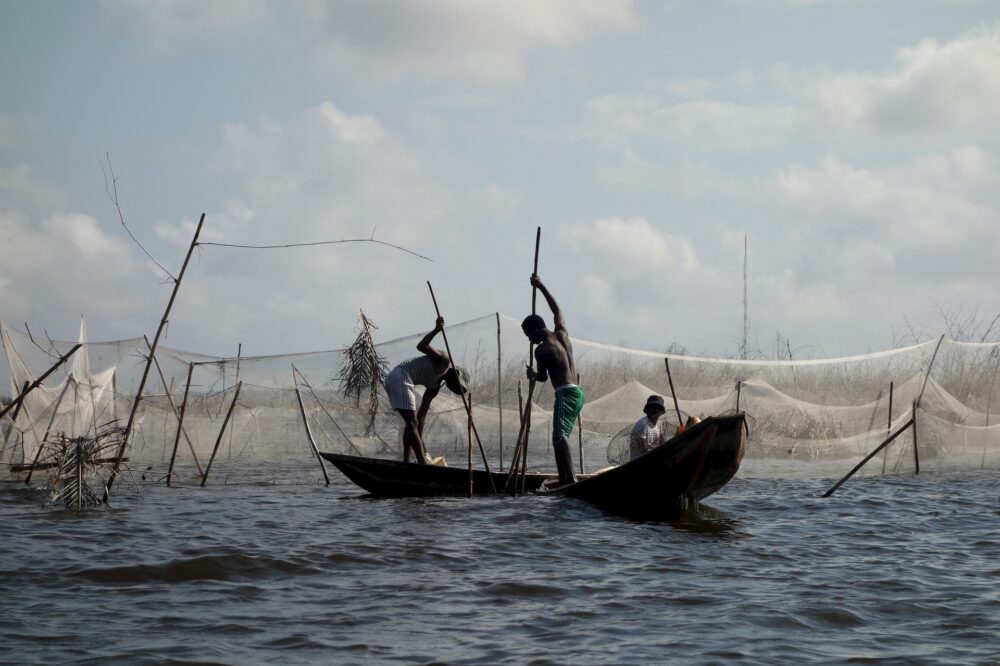
If you’ve not watched the Netflix show High on the Hog, you must stop what you’re doing. Well, no, finish this post, watch the accompanying video, subscribe, and then stop what you’re doing. Whenever you do it, you should watch the show and watch it soon.
It’s about the significant influence African cuisine has had on American food. It delves pretty deep and is endlessly fascinating and enlightening.
I bring this up because the very first episode starts with the host visiting the country of Benin to understand a bit of the roots of West African cuisine. You see, Benin’s coast on the Gulf of Guinea was known as the Slave Coast because this is where many enslaved people were held in captivity and sent to the New World. Many Black Americans can trace their ancestors back to this land.
At the time Benin was known as the Kingdom of Dahomey. And like many African countries, the modern cuisine is a culmination of both traditional African foods and European influence (especially French).

Seafood is obviously huge, especially in the southern part of the country, considering its situation on the Gulf of Guinea. But chicken, beef, and goat are also very popular when available. And the proteins are generally fried in peanut or red palm oil.
Corn, peanuts, and tomatoes are also very prevalent and found in almost all dishes. And probably from the French influence, most dishes are served with a thick flavorful sauce, especially spicy peanut sauces.
And as you’ll see on High on the Hog, there is a young generation evolving Beninese food to a modern audience. Do yourself a favor and stream it. Just not on an empty stomach.
BENINESE FOOD IN NEW YORK
From what I can gather, there is not a large community in New York from Benin. And because of that, there is not a dedicated Beninese restaurant to my knowledge.
But similar West African cuisine can be found in the Harlem, the Bronx, and Brooklyn. We’ll delve more into that when we get to the food of places like Ghana, Nigeria, Senegal, and Ivory Coast.
It seems the closest restaurant would be a place like Bognan International. which specializes in the food of Togo, Benin’s neighbor to the west.
THE VIDEO
Sam and I contemplate the shape of the country of Benin (it looks like a key!) and reminisce about some of the other African recipes we created on this journey.
There is also a good deal of muscle needed to squeeze all of the oil out of the peanuts before frying them as Kuli Kuli. Sam shows off his strength by getting just about every part of his upper body involved.
It was a fun project. As you’ll read below, the final product wasn’t so successful but in this case it was the journey that really counts.
THE DISHES
I stumbled upon a fish stew named for the historic Kingdom of Dahomey. I’m not quite sure how often this fish stew is eaten today in the country, but it definitely uses some popular ingredients (red palm oil, tomatoes, white fish). This recipe came from Congo Cookbook, a collection of African recipes, and is rather simple. The most difficult part for me was finding the proper fish to use.
Chunks or slices of a low fat white fish (porgy, bream, tilapia, etc) are fried in the red palm oil before being stewed with tomatoes, onions, and fish stock. I used ocean perch, which was the closest I could find at the markets near me. Tilapia is available, but I am not a fan of eating that fish due to the high levels of toxic chemicals found in it.
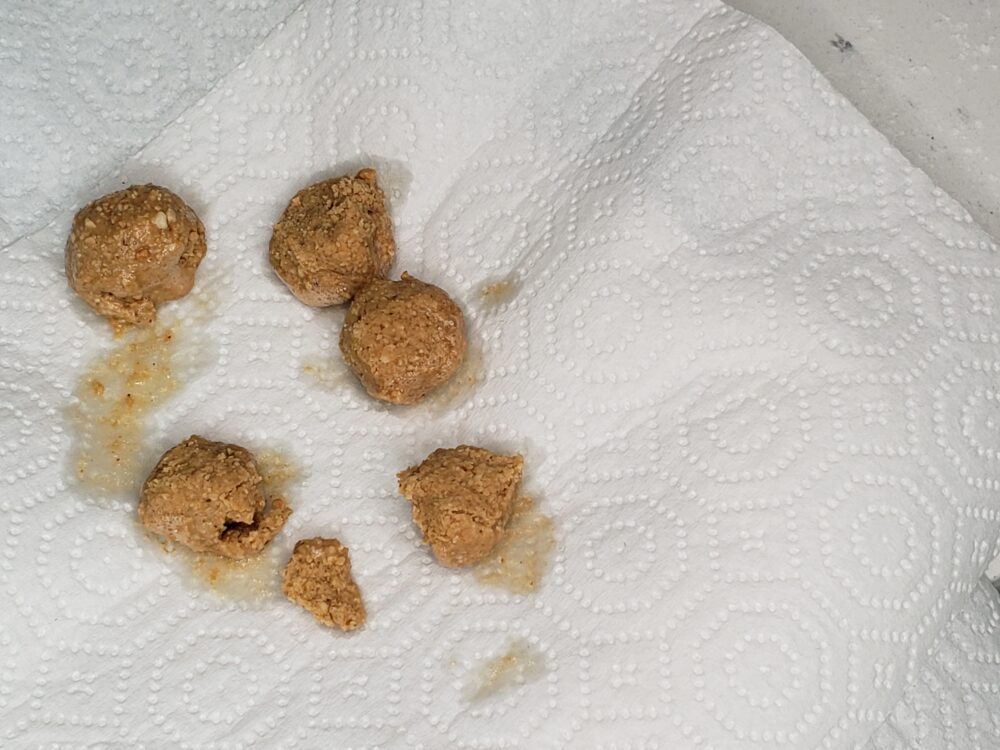
We also decided to make a snack that is considered the National Dish of Benin and is also popular in many other West African countries. Kuli Kuli are balls or sticks of crushed and spiced peanuts that are deep fried in peanut oil. It is a high calorie snack that is much more savory than sweet. We did not fully succeed at the kuli kuli recipe on our first attempt and I can’t say Sam loved them, but I found them interesting and something I would like to try my hand at again.
Perhaps we’ll re-visit these when we get to Nigeria or Ghana, where they are also popular. I know we did not do these justice.
SPECIAL INGREDIENTS
I was very impressed that Sam recognized this special ingredient from our Angola video. He better get used to it, because I imagine Red Palm Oil will reappear in most of our West African countries.
Red Palm Oil
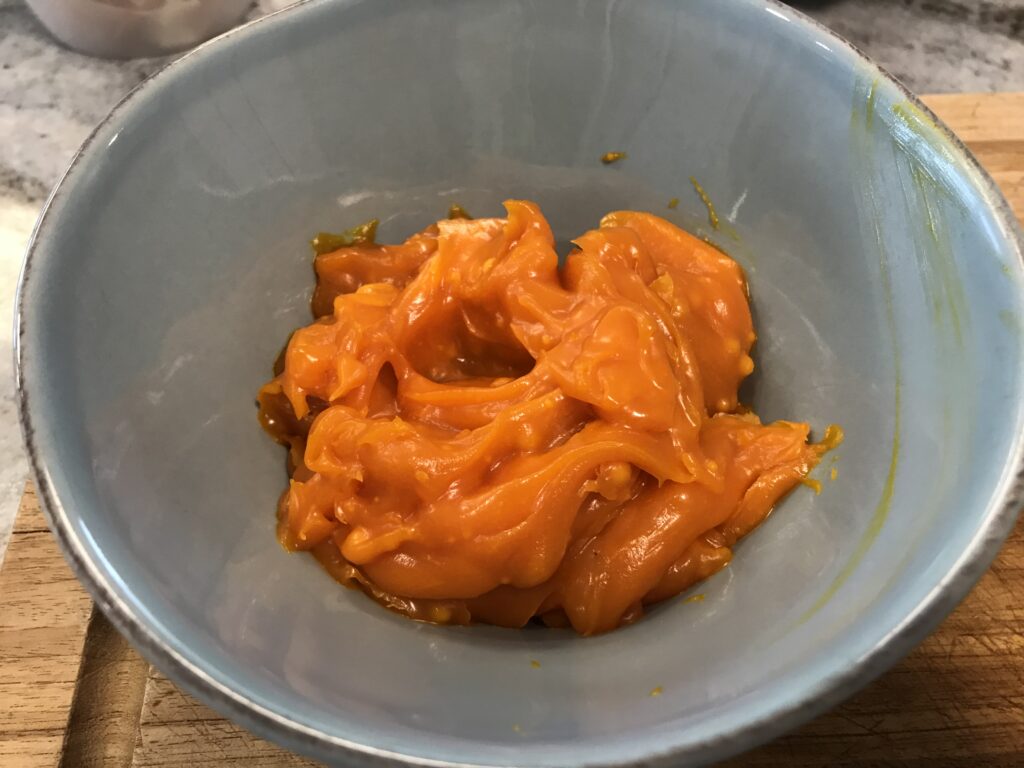
Red more about this at our Angola entry.
Dahomey Fish Stew from Benin

This is a historic seafood dish from Benin with red palm oil, tomatoes, and vegetables. Any firm low fat white fish will work, but porgies seem most common.
- 2 pounds firm flesh, low fat white fish (porgy, sea bream, perch, etc.)
- 1/4 cup red palm oil
- 2 onions (chopped)
- 2 tomatoes (chopped)
- 1 cup fish stock
- flour (for dredging)
- salt and pepper
-
Slice fish into 2 inch pieces.
-
Mix flour, salt, and pepper and place on a plate. Roll fish pieces in the mixture to dredge.
-
Heat red palm oil over medium heat. Add fish to oil and brown on both sides. About 3-5 minutes each. Remove fish and set aside.
-
Add chopped onions and fry for a few more minutes. Add tomatoes and stir. Cook for another 5 minutes. Add fish stock and bring to quick boil. Lower heat to simmer, cover, and cook for another 5 minutes.
-
Add fish back to pan and simmer, covered for another 15-20 minutes.
-
Serve with rice.
Kuli Kuli from Benin

These very popular West African snacks are made from ground roasted peanuts fried or baked with peanut oil. Usually they are not sweet, but savory, and have a high calorie count and an affordable list of ingredients.
- 1/2 cup roasted salted peanuts
- 1 tspn ginger powder
- 1/2 bouillon cube
- pinch cayenne
- peaut oil (for frying)
-
Add peanuts and spices to blender and blend well until there are no chunks.
-
Place mixture onto clean kitchen towel or cheesecloth. Squeeze out as much oil as possible. You might need to do this multiple times to get out all the oil.
-
Next shape into balls or logs. You can add a bit of water or oil to help it mold together.
-
Heat oil until very hot. Drop in peanut mixture and fry for 3-6 minutes until solid.
-
Drain on paper towels before serving.
-
If they start to disintegrate or become too soft, you can try baking them for 10 minutes at 350°F until they dry out and become crunchy.
HOW I SCREWED IT UP
So the fish stew was great. Not my favorite kind of fish, but I did a good job in bringing out as much flavor as I could. It was a rather simple recipe and it would have taken some work to really screw it up.
The kuli kuli, on the other hand, was incredibly difficult and I think I succumbed to all the potential road blocks.
We did the best we could with the tools we had but we didn’t seem to get much oil out when we continually squeezing the peanut mixture. We used a dish towel and I think cheesecloth or something thinner might have been more successful.
Some recipes call for adding a bit of water to help the kuli kuli keep its shape. I think I missed that and so that is one reason why they fell apart while cooking. I also clearly did not submerge them well enough in the peanut oil. They should have been truly deep fried.
So yeah, they were both raw and burnt at the same time. Amazing feat of failure here!
I was able to save a few of them by putting them in the oven on very low heat for a while to finish cooking and dry them out even more.
In terms of flavor, I’m not really sure what they were supposed to taste like, but I don’t think it was supposed to be sweet. These were not sweet. They might have been a bit too aggressive. I added an entire cube of bouillon which I think was a bit much. It sort of overpowered the other strong flavors.
As you’ll read, Sam was not a fan. And I’m sure a good deal of that had to do with my inexperience and ineptitude at preparing them.
SAM’S REACTION
Sam refused to even look at the fish stew. You’ll see in the video that he is violently upset that I even put it on the table in front of him.
Perhaps this is because outside of salmon and shellfish, he has really not be exposed to seafood. Not sure why that is because I love seafood. Or maybe it’s just that young American children tend to have a natural disdain for things from the sea. No idea.
We served the fish with rice and Sam is all about rice. Especially when it is seasoned with soy sauce. Truly Sam might make it through this project thinking every country in the world eats rice with soy sauce.
He was more apt to try the kuli kuli. Maybe this is because he actually contributed to the making of it. But he spit the peanut fritters out of his mouth. It was the first time I served him something that he literally spit out. Clearly he did not like it.
As mentioned, it had a very savory chickeny flavor with some aggressive spicing. To be honest, I would have been surprised if he liked it.
Oh, well. Let’s hope we have more luck next time in….
NEXT TIME
We’re heading high up into the mountains next time to a place known as “Land of the Thunder Dragon”. Sounds intriguing, doesn’t it? Well, it’s called Bhutan and it might be our new favorite country…


